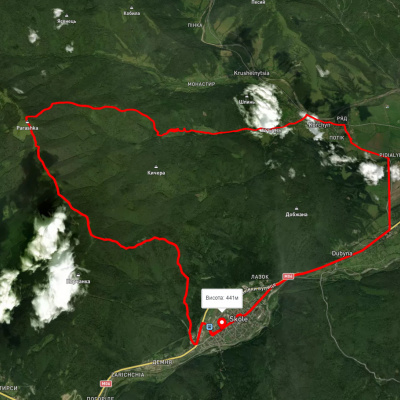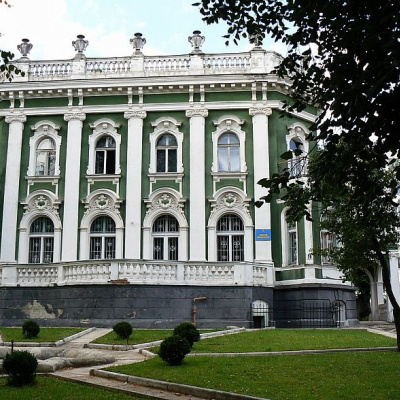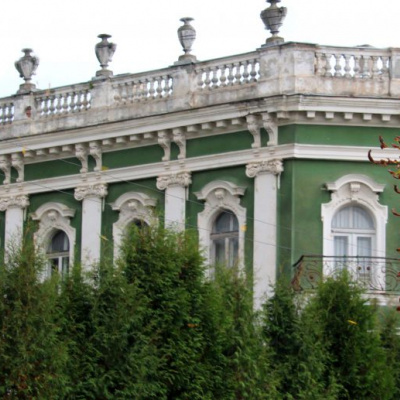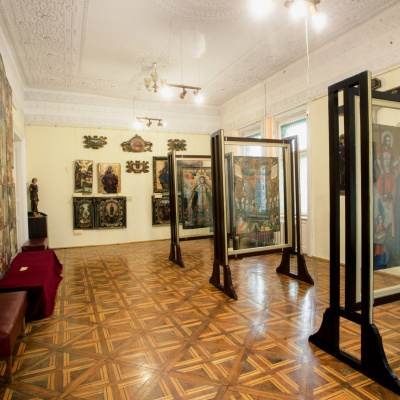State Museum of Local Lore "Drohobychchyna", Drohobych
If you come to Drohobych, Lviv region, be sure to visit the local history museum Drohobychchyna. The museum's administration is located in the Palace of Arts. The museum's collection includes about 55 thousand items. All of them are located in different buildings of the museum complex according to their subject matter. In general, all of these exhibits recreate the history of Drohobych region from the Paleolithic to the present. The total exhibition area is 2600 square meters.
The Drohobychyna Museum (English: Museum Drohobychyna, Polish: Muzeum Drohobyczyna, commonly called the Drohobych Museum of Local Lore or simply Drohobych Museum) is a multidisciplinary museum complex located in the city ofDrohobych, Lviv region; it consists of six departments containing a valuable collection of materials and objects on the history, nature, culture, ethnography, creative achievements and prominent figures of Drohobych region.
Since the museum is an important subject and factor of national and cultural development, its strategy is to popularize and preserve historical and spiritual heritage, complete museum collections, and perform educational, publishing, research, restoration, and monument protection functions.
In general, the museum's relics recreate the history of the region from the Paleolithic era to the present. European art is represented by monuments of painting, ceramics and furniture of the XVII-XIX centuries. The museum has many valuable exhibits. In particular, the treasures of Count Lianzkoronski and a mural by the world-famous writer and artist Bruno Schulz. A special decoration and pride of the museum is the 15th-century wooden architecture monument, the Church of St. George, which is a UNESCO World Heritage Site.
The Drohobych Museum of Local Lore was opened in 1940. Today, the Drohobych Museum of Local Lore is actually several museums united into one structure:
- The Department of Nature and History was opened in 1941 in the former County Council building at 32 Franko Street, which is historically primary;
- The Gallery of Sacred Art (18 Sichovykh Striltsiv Street), which has been operating since 2010;
- The Department of European Art (known as the "Palace of Arts"/Villa Bianchi/"Green House" (38 Shevchenka St.).In 2005, the Drohobychyna Museum received one of the most beautiful local 20th-century baroque buildings, the former house of radiologist Jozef Rott, which houses the Palace of Arts. The administration of the museum complex is also located here.
- The Department of Wooden Architecture was founded in 1981 (25 Solonyi Stavok St.) and is in charge of two sacred monuments of national importance: a wooden architecture monument of the XV-XVII centuries (St. George's Church; 23a Solonyi Stavok St.) and a wooden architecture monument from the XVII century, the Church of the Exaltation of the Holy Cross (7 Zvarytska St.).
There are also separate departments of the museum:
- The Museum of the Prison on Stryiska Street (3 Stryiska Street), a former NKVD torture chamber.
- Information and publishing department (38 Shevchenka St.).
The exposition of the History Department is housed in the building of the former Drohobych District Council (32 I. Franka St.), built in 1894. It highlights important events in the history of the region (and, partially, the city of Sambir), the life and way of life of the inhabitants of Drohobych region from ancient times to the present day. It contains archaeological materials, medieval household items, handicrafts and craft tools, musical instruments, photographs, documents, and relics related to the life and work of prominent people from Drohobych.
The exposition also features memorabilia that highlight the history of ancient Drohobych, which in the 14th century was one of the main centers of salt production in the Przemysl Land, and in 1422 the city was granted the privilege of Magdeburg Law. Among the museum exhibits are a model of the coat of arms of the XVI-XVIII centuries depicting 9 traditional salt furnaces (measures), finger bricks of the XIV-XV centuries from excavations near the Church of St. Bartholomew, a model of the Church of the Exaltation of the XV-XVII centuries, a part of a wooden water pipe, and the remains of the city's XVII century palisade.
Musical instruments of the seventeenth and eighteenth centuries are also presented: tambourine, lyre, and cymbals, which are essential attributes of troyist musicians, trembitas, and a rattle. An important milestone in the history of Drohobych is the oil era, which is represented by a large number of exhibits.
One of the exposition sections is represented by monuments of primitive society found during archaeological excavations in the Drohobych region, which recreate different eras: from the Paleolithic to the Early Iron Age. The oldest known clay molded pottery from a Neolithic settlement of the Linear-Band Ceramics culture from the village of Kulchytsi, Sambir district, is on display. The centerpiece of the History Department's exposition is the Sambir Bronze Age treasure (bracelets, necklaces, axes, and a sickle), which testifies to trade and exchange ties with tribes living south of the Carpathians.
The number of exhibits in the department is constantly growing. They also include archaeological and ethnographic materials, documents, photographs, products of Drohobych craftsmen, and tools. The natural history section displays samples of the flora and fauna of the Carpathian region.
A special place in the exposition and storage of the department is occupied by relics related to the life and work of prominent natives of Drohobych: Yurii Kotermak (Drohobych), Ivan Franko, Ulyana Kravchenko, "Galician Makarenko" Stefan Kovaliv, and Mykhailo Drahan.
The complex of exhibits highlights the long struggle for independence and the formation of the Ukrainian state, the activities of the OUN-UPA. The memorial room of Colonel Andriy Melnyk, the head of the OUN leadership, was also opened. The exposition includes the original flag of the organization, on which prominent figures such as Yevhen Konovalets, Andriy Melnyk, Stepan Bandera, and others swore allegiance to Ukraine.
The history department also houses the Andriy Melnyk Memorial Room, which is dedicated to the life and work of the OUN leader (from personal belongings to thematic literature).
The main exhibition focus of the history department is the diorama model "Insurgent hideout" made according to the description of UPA commander Stepan Stebelsky ("Khrin"). Its opening was dedicated to the 60th anniversary of the UPA.
Particularly noteworthy are the artistic masterpieces by Stefan Popovych Medytskyi. Part of the exhibition is dedicated to the work of Father Vasyl Hlibkevych. This is icon painting of the 40s and 70s of the 18th century. All of the icons were painted for Drohobych churches, most of them for St. George's and St. Vozdvyzhenska.
Among the exhibits of the department are restored icons of the Drohobych region and secular art of the XVII-XVIII centuries.
In the 1990s, the Palace of Arts (Department of European Art) was transferred to the Drohobychyna Museum, where the exhibition halls were opened on September 21, 1995. Two halls on the first floor and the entire second floor are exhibition halls.
After the reorganization of the Picture Gallery (now the Gallery of Sacred Art) in 2005, the exhibition "European Art of the XVII - early XX centuries" was moved here. Nowadays, the Palace of Arts also houses the Drohobych Association of Artists (DAH). The artists who are members of this association are well-known artists in Ukraine and abroad. They work in various styles and techniques: oil painting, painting on glass, and church painting.
Ukrainian contemporary painting in the Palace of Arts is represented by works of famous artists of the mid- and late twentieth century, including People's Artist of Ukraine M. Romanyshyn, famous artists V. Lytvynenko, I. Bondar, A. Shkurka, M. Peter, V. Rybotytskyi, P. Heideck, and E. Romanescu.
Mostly, these are landscapes, still lifes, and narrative works. The exposition presents works by the artist of two generations - different schools, styles, language, and techniques, but all of them work mainly in the genre of Ukrainian lyrical landscape.
In 2001, the museum's art collection was replenished with wall paintings by the writer and artist Bruno Schultz, a native of Drohobych. Exhibits in two halls tell about the life and work of this artist.
Today the exposition of the Palace of Arts consists of: changing exhibitions (monthly updates), Bruno Schulz's murals, an exhibition of twentieth-century paintings from the stock collection, and the treasures of Count Lianckoronski.
In 1992, the Drohobych Museum of Local Lore was reorganized and renamed the Drohobychchyna Museum. Ethnographic and art departments were also created. In 1996, an art gallery was opened in the former house of the local vice mayor Jakub Faierstein, where the Drohobych registry office was located in Soviet times.
The museum's relics also include monuments of European painting, ceramics, iconography, old prints, and manuscripts. In particular, the most famous exhibits are the mural by Bruno Schultz, a native of Drohobych, writer and artist, and the treasures of Count Lianzkoronski.
Drohobych can be reached by train from Kyiv, Lviv, Ternopil, Dnipro, Vinnytsia, and Khmelnytskyi. The distance to Lviv is 85 kilometers. Drohobych can also be reached by bus from Berezhany, Buchach, Rivne, Chernivtsi, Ivano-Frankivsk, Zhytomyr, Rohatyn, Kolomyia, Kamianets-Podilskyi, Stryi, and Sambir.
Drohobych Museum of Local Lore, or rather, the Palace of Arts and administration, is located at 38 Taras Shevchenko Street. There you will be provided with all the information you are interested in and directed to the right department of the museum.
The museum director is Alla Gladun (since 2011). Opening hours: 9:00-17:00.
Accommodation around State Museum of Local Lore "Drohobychchyna", Drohobych:
Які маршрути проходять повз State Museum of Local Lore "Drohobychchyna", Drohobych?
Пропонуємо пройти такі туристичні (пішохідні) маршрути через/біля State Museum of Local Lore "Drohobychchyna", Drohobych: с. Сопіт, через Сопітські полонини до с. Сопіт, с. Корчин, через вдсп. Гуркало, г. Парашка до с. Крушельниця, с. Кам'янка, через г. Лопата, м. Сколе, г. Парашка до с. Крушельниця, с. Корчин – вдсп. Гуркало, м. Сколе, через г. Парашка, вдсп. Гуркало, с. Корчин до м. Сколе, м. Сколе, через г. Парашка, вдсп. Гуркало, с. Корчин до с. Верхнє Синьовидне
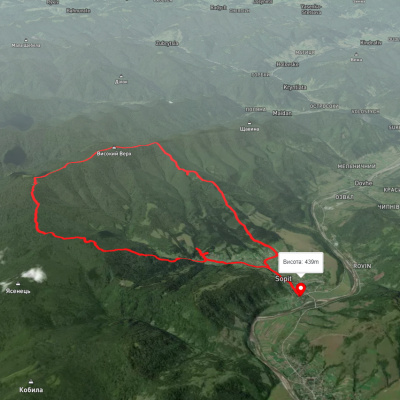
с. Сопіт, через Сопітські полонини до с. Сопіт

с. Корчин, через вдсп. Гуркало, г. Парашка до с. Крушельниця
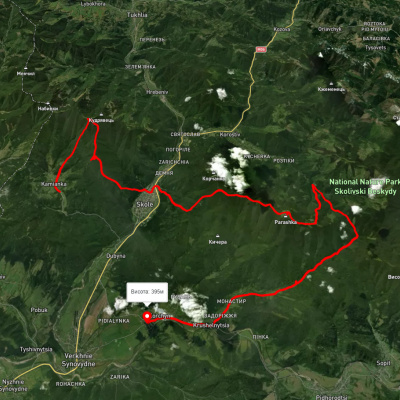
с. Кам'янка, через г. Лопата, м. Сколе, г. Парашка до с. Крушельниця
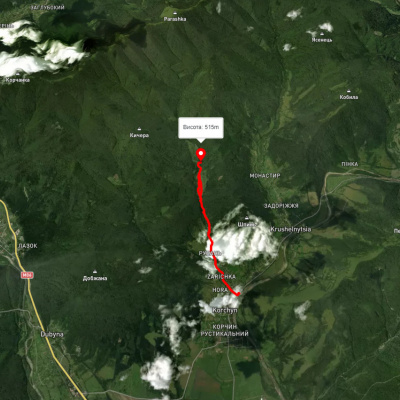
с. Корчин – вдсп. Гуркало
